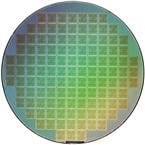NVIDIA GeForce 8800 Ultra
Introduction and Related Information

It's springtime here in the United States. The rain is pouring, the trees and flowers are blooming, and as usual NVIDIA is ready with a new product to refresh their existing high-end GPU line up. A few weeks ago we showed you the new mid-range GeForce 8600 GTS, GT and 8500 GT cards, which expanded NVIDIA's DirectX 10-compatible offerings to include products with price points ranging from $89 all the way on up to $649. But today we've got something for the hardcore enthusiasts among you, and along the way we'll have to revise the upper end of that price range a bit.
Despite the fact that their main competition - AMD/ATI - hasn't launch a new product in months and that they don't have a DX10 capable part on store shelves just yet, NVIDIA saw fit to turn the screws add some more virtual horsepower to their 'Ultimate Gaming Platform'. The result is the card we'll be showcasing here today, NVIDIA's new flagship GeForce 8800 Ultra.
As you'll see on the proceeding pages, not much has changed since the introduction of the GeForce 8800 GTX, but NVIDIA has made some tweaks to their high-end design to wring out more performance, while keeping the card's TDP and acoustic signature within the same general ranges. We've got lots to talk about and plenty of performance data to share, so let's jump right in and get down to business...
![]()
NVIDIA GeForce 8800 Series
Features & Specifications
|
NVIDIA unified architecture: Fully unified shader core dynamically allocates processing power to geometry, vertex, physics, or pixel shading operations, delivering up to 2x the gaming performance of prior generation GPUs.
Full Microsoft DirectX 10 Support:
NVIDIA SLI Technology:
NVIDIA Lumenex Engine:
128-bit floating point High Dynamic-Range (HDR):
NVIDIA Quantum Effects Technology:
NVIDIA ForceWare Unified Driver Architecture (UDA):
OpenGL 2.0 Optimizations and Support:
NVIDIA nView Multi-Display Technology:
PCI Express Support:
Built for Microsoft Windows Vista:
NVIDIA PureVideo HD Technology:
Discrete, Programmable Video Processor: |
Hardware Decode Acceleration:
HDCP Capable:
Spatial-Temporal De-Interlacing:
High-Quality Scaling:
Inverse Telecine (3:2 & 2:2 Pulldown Correction):
Bad Edit Correction:
Video Color Correction:
Integrated SD and HD TV Output:
Noise Reduction:
Edge Enhancement:
Dual 400MHz RAMDACs:
Dual Dual-link DVI Support:
|
We've already covered the architecture and feature inherent to the NVIDIA GeForce 8 Series GPUs in previous articles, so we won't go into detail again here. To familiarize yourself with the features and capabilities of NVIDIA's GeForce 8x00 series cards, nForce chipsets, and their multi-GPU platform as whole, please take some time to peruse the articles listed below:
The details and performance data in the articles listed above will give you much of the background information necessary to better understand the new GeForce 8800 Ultra graphics card we'll be showcasing here today. If you're unclear about anything on the proceeding pages, please look back to these articles for a multitude of background data related to today's subject matter. The 'NVIDIA GeForce 8800 GTX & GeForce 8800 GTS Launch' article in particular is loaded with information that also pertains to the new GeForce 8800 Ultra.







